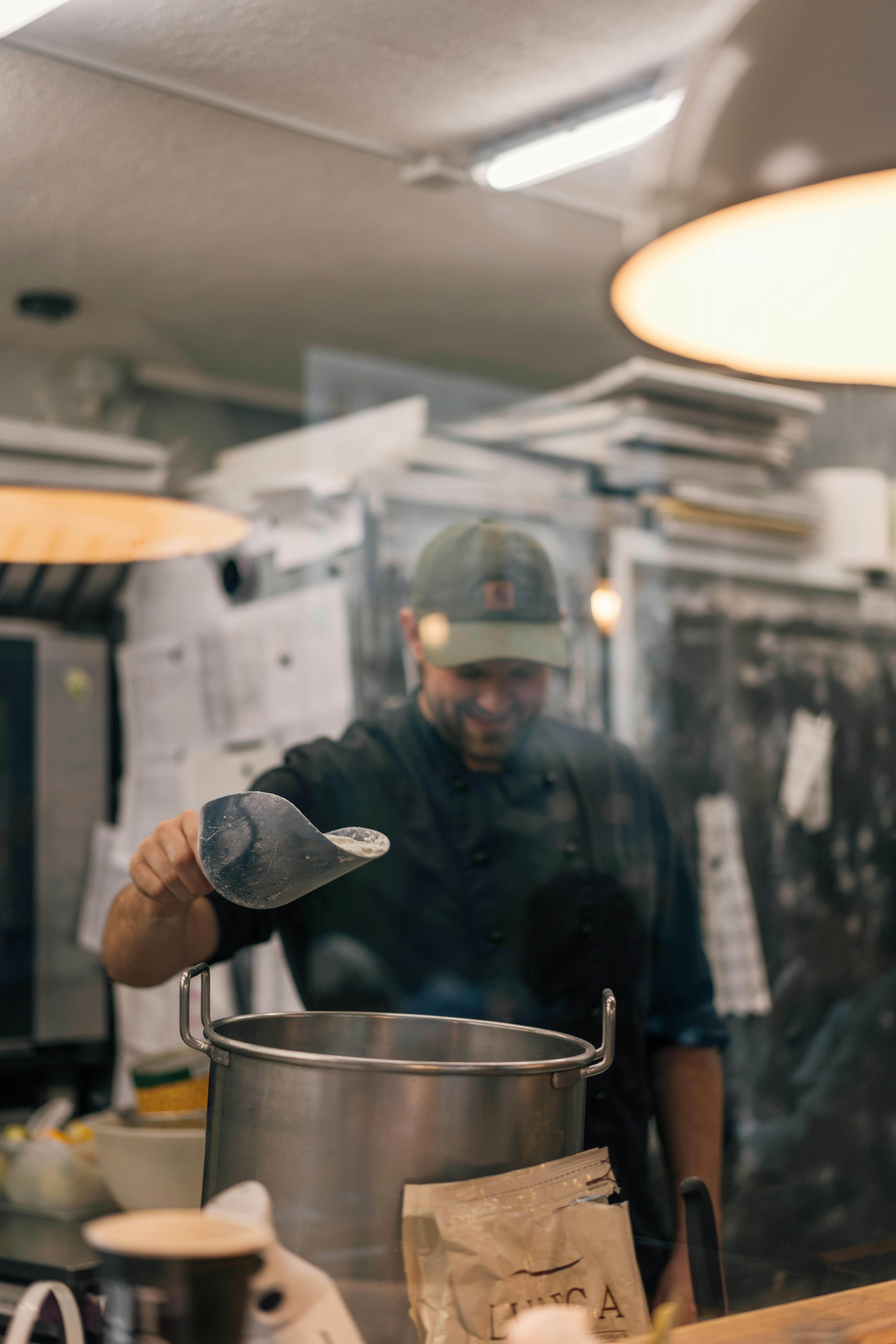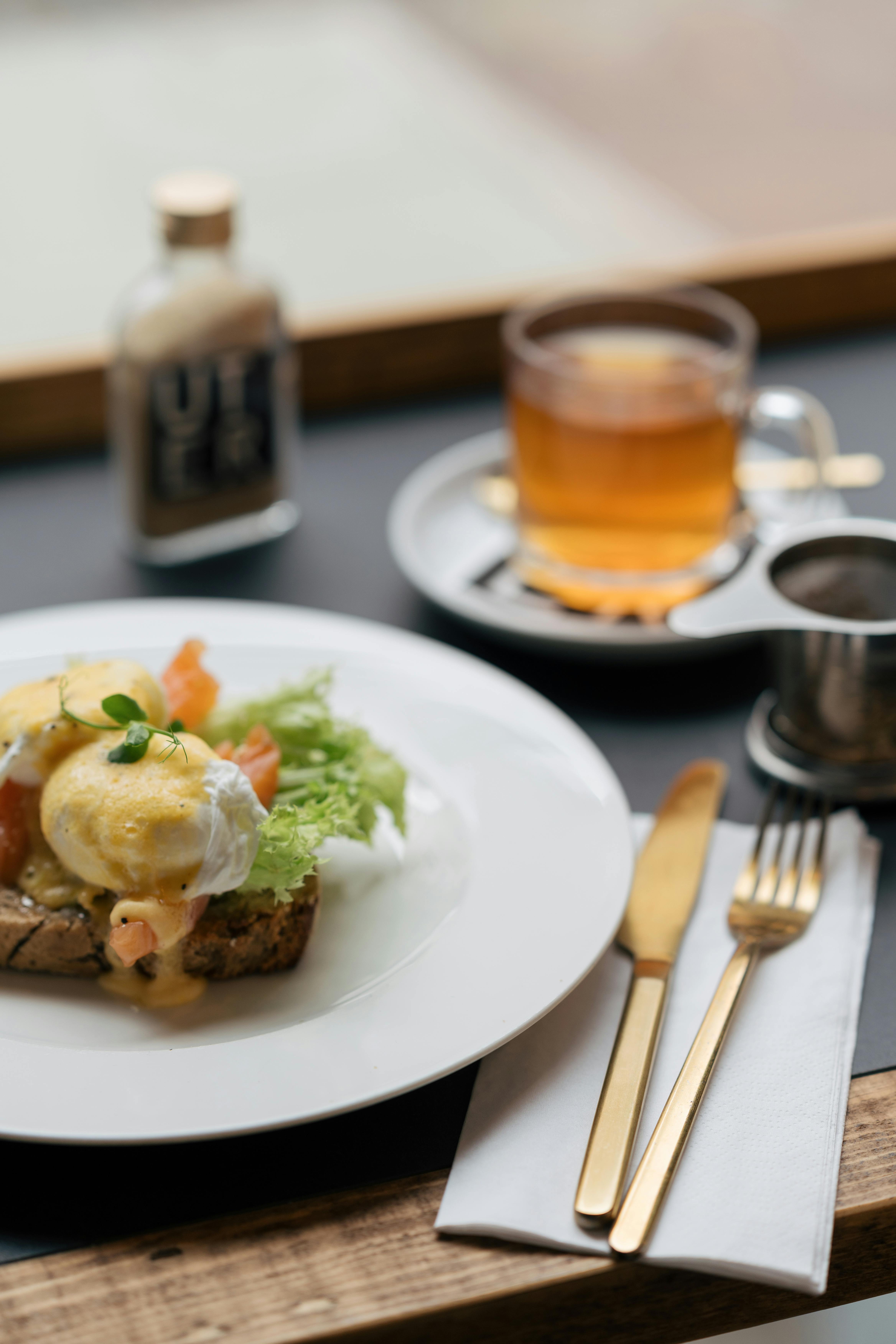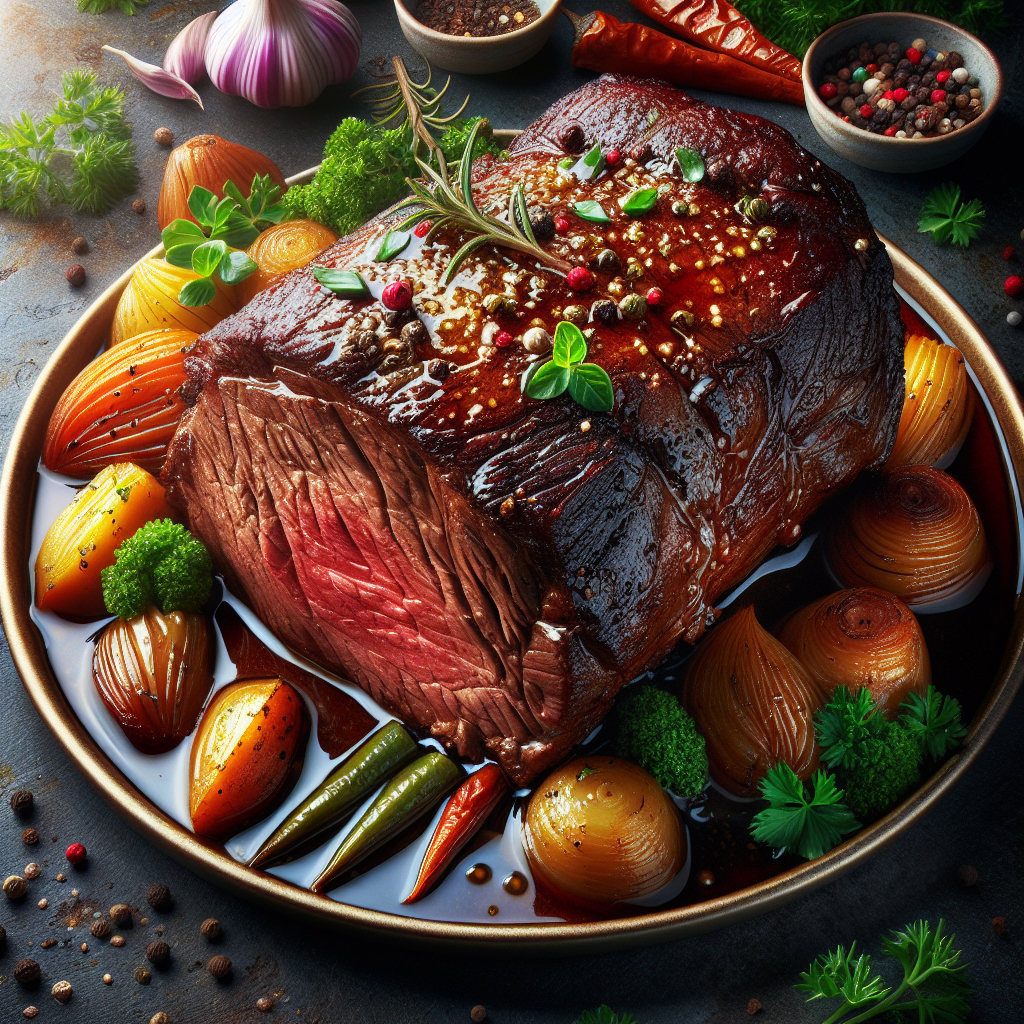Are you looking to elevate your cooking skills and create mouthwatering dishes? Look no further than the art of braising. In this article, we will explore the techniques and tips you need to master the art of braising, resulting in tender and flavorful results. From choosing the right cuts of meat to mastering the perfect braising liquid, we’ve got you covered. So, roll up your sleeves, grab your apron, and get ready to become a braising expert in no time.

The Basics of Braising
Braising is a cooking method that transforms tough, inexpensive cuts of meat into tender and flavorful dishes. It’s a slow cooking technique that involves cooking the meat in a liquid at a low temperature for an extended period of time.
What is braising?
Braising is a cooking technique that involves searing the meat to develop a golden brown crust, then simmering it in a flavorful liquid until it becomes tender and delicious. This method of cooking is particularly suited for tougher cuts of meat that have a lot of connective tissue, such as beef chuck, pork shoulder, and lamb shanks.
How does braising work?
When you braise meat, the low, slow cooking process breaks down the collagen in the connective tissue, transforming it into gelatin. This gelatin adds both flavor and moisture to the meat, resulting in a tender and succulent dish. The liquid used in braising also infuses the meat with its flavors, making it even more delicious.
Why is braising a popular cooking method?
Braising is a popular cooking method because it is versatile, forgiving, and produces incredibly flavorful results. It allows you to turn inexpensive cuts of meat into mouthwatering dishes without much effort. The slow cooking process ensures that the meat becomes tender and juicy, and the flavors of the braising liquid penetrate deep into the meat, creating a flavorful dish. Braising is also a great option for busy cooks, as it requires minimal hands-on time and can be done on the stovetop, in the oven, or in a slow cooker.
Choosing the Right Meat
Choosing the right meat is crucial for a successful braising dish. Not all cuts of meat are suitable for braising, as some may become dry and tough when cooked using this method.
What cuts of meat are best for braising?
Tough cuts of meat with a lot of connective tissue are ideal for braising. These include beef chuck, short ribs, brisket, pork shoulder (also known as pork butt), and lamb shanks. These cuts have more collagen, which breaks down into gelatin during the braising process, resulting in tender and flavorful meat.
How to select the perfect meat for braising
When selecting meat for braising, look for cuts that have plenty of marbling and connective tissue. This will ensure that the meat stays moist and tender during the long cooking process. Choose cuts that are well-suited for slow cooking, such as those mentioned above. The meat should also be fresh, and if possible, sourced from a reputable butcher.

Preparing the Meat
Properly preparing the meat before braising is essential for achieving the best results. This involves trimming any excess fat, seasoning the meat, and deciding whether to marinate or use a dry rub.
Trimming and seasoning the meat
Before braising, it’s a good idea to trim any excess fat from the meat. While some fat adds flavor, too much can make the dish greasy. Season the meat generously with salt and pepper, or use your favorite seasoning blend. This will help enhance the flavors of the meat during the braising process.
Marinating vs. dry rubs
Marinating the meat before braising can infuse it with additional flavor. A marinade typically consists of a mixture of liquids and spices, which can penetrate the meat and tenderize it. However, if you’re short on time, a dry rub can also add flavor to the meat. A dry rub consists of a variety of spices, herbs, and sometimes sugar, which is rubbed onto the meat before cooking.
The Importance of Browning
Browning the meat before braising is an essential step that adds depth of flavor and texture to the dish.
Why is browning the meat important?
Browning the meat helps develop a rich, caramelized crust on the surface of the meat. This crust adds complex flavors to the dish and enhances its visual appeal. Additionally, the Maillard reaction that occurs during the browning process adds depth and complexity to the flavor of the meat.
How to achieve a perfect sear
To achieve a perfect sear on your meat, start by patting it dry with paper towels to ensure a dry surface. Heat a skillet or Dutch oven over high heat and add a small amount of oil or fat. Once the oil is hot, carefully add the meat and allow it to sear undisturbed for a few minutes on each side, until a golden brown crust forms. This will create flavorful fond, or browned bits, that will enhance the taste of your braising liquid.

Selecting the Perfect Braising Liquid
The choice of braising liquid plays a crucial role in the flavor profile of your braised dish. There are various types of braising liquids to choose from, each with its distinct flavor profile.
Types of braising liquids
Braising liquids can range from simple broths and stocks to more complex mixtures of wine, beer, or even fruit juices. Some commonly used braising liquids include beef or chicken broth, red or white wine, beer, tomato sauce, coconut milk, and apple cider.
Matching the liquid to the meat and flavors
When selecting a braising liquid, consider the flavors you want to infuse into the meat. For example, red wine pairs well with beef and adds depth and richness to the dish, while white wine is a great choice for chicken and lighter cuts of meat. Additionally, consider the overall flavor profile you want to achieve. If you’re aiming for a more exotic dish, consider using spices and herbs along with your braising liquid to create a unique flavor combination.
Setting the Braising Temperature
The temperature at which you braise your meat is crucial for achieving the desired results. Different meats require different cooking temperatures to become tender and succulent.
Why is temperature important in braising?
The low and slow cooking method of braising requires a precise temperature to ensure that the meat is cooked evenly and becomes tender. Too high of a temperature can result in dry and tough meat, while too low of a temperature can lead to undercooked meat.
The ideal braising temperature for different meats
The ideal braising temperature depends on the cut of meat you’re using. For tough cuts like beef chuck or pork shoulder, a temperature of around 300-325°F (150-163°C) is ideal. Leaner cuts of meat, such as chicken or turkey, require a slightly lower temperature of around 275-300°F (135-150°C). It’s important to monitor the temperature throughout the cooking process to ensure the meat is cooking at the desired temperature.
Choosing the Right Braising Vessel
The vessel in which you braise your meat can have an impact on the cooking process and the outcome of your dish. There are different types of braising vessels to choose from, each with its advantages and disadvantages.
Different types of braising vessels
Common types of braising vessels include Dutch ovens, slow cookers, and instant pots. Dutch ovens are versatile and excellent for stovetop and oven braising. Slow cookers are convenient and allow for longer, hands-off cooking. Instant pots combine the functions of a pressure cooker and slow cooker, allowing for faster braising.
Pros and cons of each type
Dutch ovens provide excellent heat retention and even heat distribution, which results in even cooking. However, they require stovetop or oven use, which may not be as convenient for some cooks. Slow cookers are incredibly convenient and allow for long periods of unattended cooking, but they may not offer the same level of browning as a Dutch oven. Instant pots are versatile and offer the convenience of both slow cooking and pressure cooking, but they have a learning curve and may not give the same depth of flavor as traditional methods.
Braising Techniques
There are several braising techniques to choose from, depending on your preferred cooking method and the equipment you have available.
Stovetop braising
Stovetop braising involves searing the meat in a skillet or Dutch oven, then adding the braising liquid and bringing it to a simmer. The meat is then cooked on low heat until tender.
Oven braising
Oven braising involves searing the meat in a skillet or Dutch oven, then transferring it to a preheated oven to cook. This method allows for even cooking and can result in a more intense caramelization.
Slow cooker braising
Slow cooker braising is a convenient method that involves searing the meat then transferring it to a slow cooker along with the braising liquid. The meat is then cooked on low heat for several hours until tender.
Instant pot braising
Instant pot braising combines the convenience of a slow cooker with the speed of a pressure cooker. The meat is seared, the liquid is added, and then the instant pot is set to the desired cooking function. This method reduces the cooking time significantly.
Tips for Flavorful Braising
To enhance the flavors of your braised dishes, there are several techniques and ingredients you can use.
Enhancing flavors with aromatics and spices
Adding aromatics such as onions, garlic, carrots, and celery to your braising liquid can infuse the dish with additional depth of flavor. Additionally, using spices and herbs like rosemary, thyme, bay leaves, and black pepper can enhance the taste of the meat and braising liquid.
Adding wine or other alcohol for complexity
Adding a splash of wine or other alcohol to your braising liquid can add complexity and depth to the flavors of the dish. Red wine pairs well with beef and darker meats, while white wine or beer can complement chicken or lighter meats. Experiment with different alcohols to discover new and exciting flavor combinations.
Braising Tips and Troubleshooting
Braising, like any cooking method, can sometimes present challenges. Here are some tips for overcoming common issues that may arise.
How to prevent overcooking
To prevent overcooking, it’s important to monitor the cooking time and temperature closely. Follow recipes closely and use a meat thermometer to ensure that the meat reaches the desired level of doneness without becoming dry or tough.
How to thicken braising liquids
If your braising liquid is too thin, you can thicken it by creating a slurry of flour or cornstarch with water or broth. Add the slurry to the braising liquid, bring it to a simmer, and cook until the desired thickness is achieved.
How to enhance tenderness
If your braised meat is not as tender as desired, you can continue cooking it for a longer period of time at a lower temperature. This will give the collagen more time to break down into gelatin, resulting in a more tender and flavorful dish. Alternatively, you can try using a meat tenderizer or marinating the meat for a longer period of time before braising.
Braising is a versatile and rewarding cooking method that allows you to transform tough cuts of meat into delicious and tender dishes. By selecting the right meat, using flavorful braising liquids, and incorporating various techniques, you can create mouthwatering braised meals that will impress your family and friends. So, grab your braising vessel of choice, prepare the meat with care, and get ready to savor the rich and savory flavors of perfectly braised dishes.

